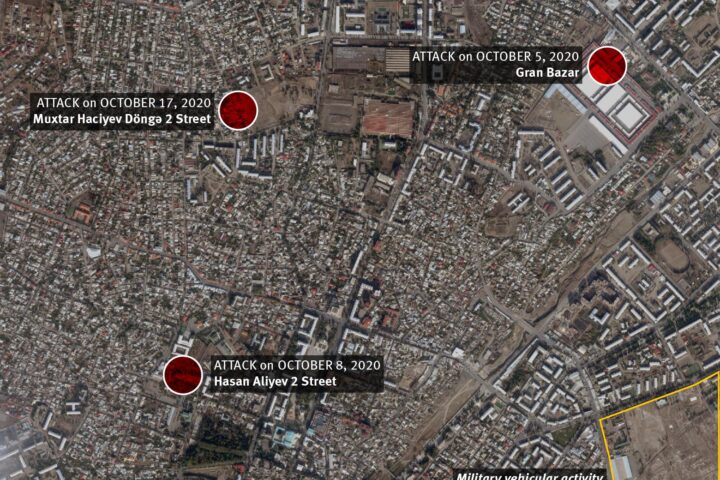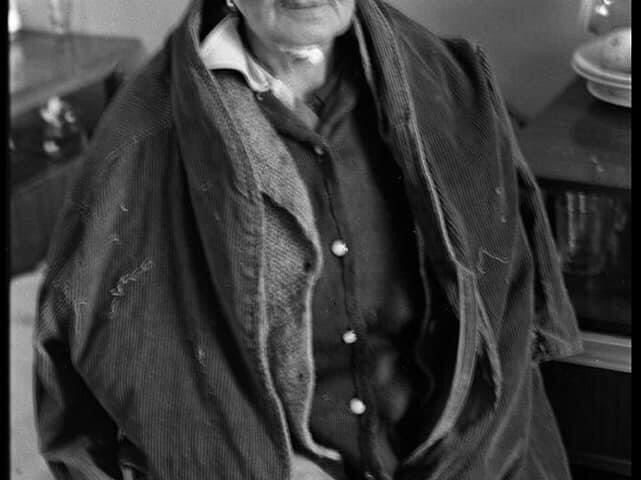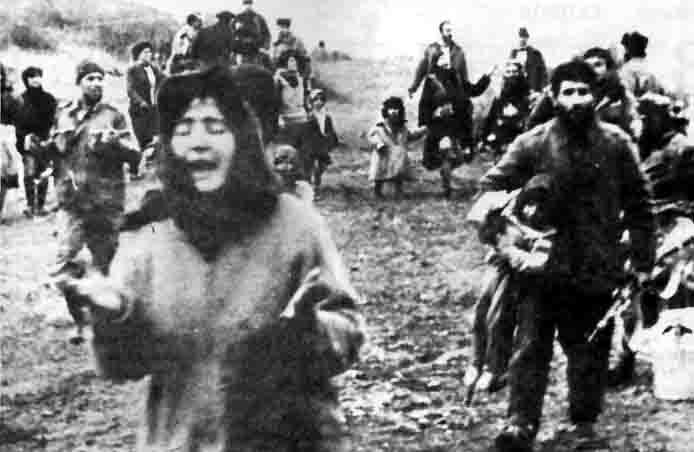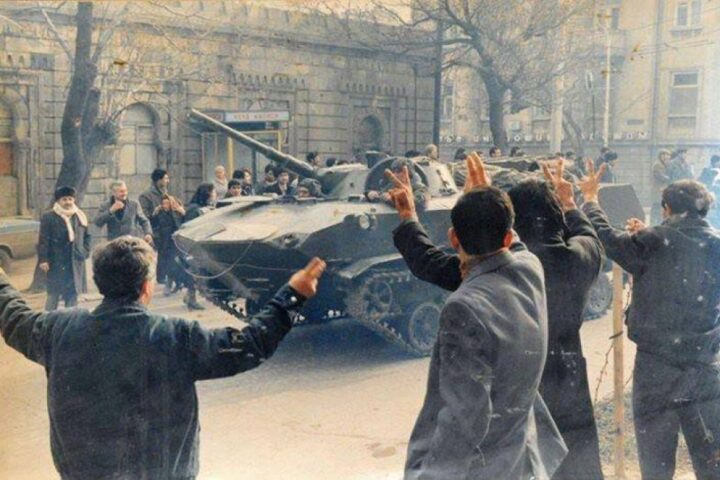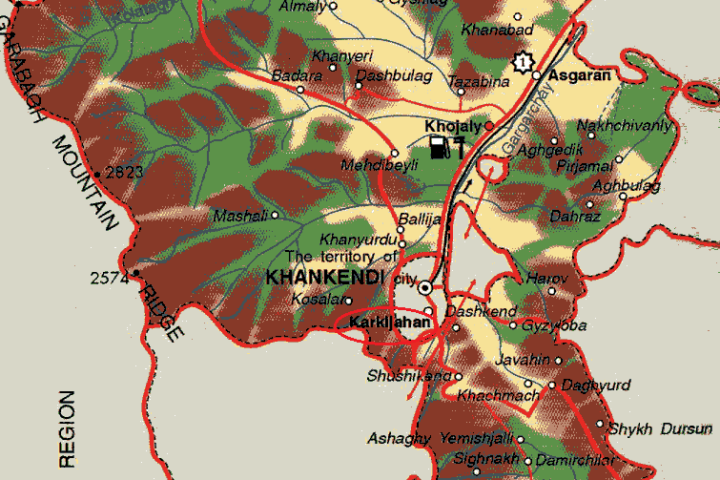Legal status of NK before and after Sovietization in 1920
NK was not “part of Armenia until 1923” or “part of Azerbaijan since 1920’s” and was not “ceded” to Azerbaijan by Soviet dictator Joseph Stalin, as many Western authors and news reports repeat to this day. Archival documents and expert determinations, such as the above-mentioned 2001 U.S. Department of State fact sheet, prove beyond any doubt that NK was never part of Armenia and instead, was part of Azerbaijan. However, the most important document in this context is the July 5, 1921 plenum of Kavbureau CC RCP(b) decree (Caucasus Bureau of the Central Committee of the Russian Communist Party of the Bolsheviks), in which Stalin, along with several Armenian members, such as A.Nazaretyan and A.Myasnikyan, decided on “leaving” (or “retaining”; the term in original Russian that was used in the document: оставить (ostavit’)) NK within Azerbaijan and not “transferring” (or ceding; in Russian: отдать (otdat’)) it to anyone: “Nagorno-Karabakh to leave within the borders of Azerbaijan SSR”.[15]
Thus, when you “retain” or “leave” something somewhere, it obviously means that it was there in the first place (that is, Karabakh belonged to Azerbaijan since before the Sovietization). Due to unfortunate mistranslations and manipulations of the key terminology from Russian into English from these official Soviet documents pertaining to the history of Karabakh region, too many, to be even mentioned here, veteran journalists and political scientists have fallen into the trap of perpetuating the regrettable clichés and mistakes.
Other scholarly references proving that Karabakh was Azerbaijan’s even before Stalin are attested, for example, by Prof. Audrey Altstadt: “Early in 1920, the Peace Conference recognized Azerbaijan’s claim to Karabagh”.[16]
Anastas Mikoyan, a powerful ethnically Armenian Soviet official and right-hand of Stalin, in his report to the chairman of CC RCP(b) Vladimir Lenin on 22 May 1919, wrote: “Dashnaks – agents of the Armenian government, are trying to attach [or connect, in Russian: prisoedineniya – A.B.] Karabakh to Armenia. But for the population of Karabakh that would mean to lose their source of life in Baku and link up with Irevan [current Yerevan – A.B.]. With which [meaning Irevan/Yerevan – A.B.] they were never and in no way linked together”.[17]
Then, in August of 1920, in the letter by the chairman of Azerbaijan Revolutionary Committee (Azrevcom), Nariman Narimanov, and such Armenian members of the body as abovementioned A.Mikoyan and A.Narijanyan, addressed to the Commissar (Minister) of Foreign Affairs in Moscow, G.Chicherin, and to G.Ordzhonikidze, another powerful Bolshevik and senior member of the Caucasus Bureau of the CC RCP(b), in Vladikavkaz, wrote: “As to the supposedly disputed Zangezur and Karabakh, already part of Soviet Azerbaijan, we categorically declare, that these lands must indisputably remain as part of Azerbaijan henceforth”.[18]
Moreover, to be certain, it would be impossible to include any Armenian lands into Azerbaijan during the Soviet times, due to the overwhelming presence and domination on the part of ethnic Armenians in the Soviet leadership, starting with the right-hand of Stalin and long-time apparatchik Anastas Mikoyan (1895-1978). Also, Azerbaijan was the only Soviet republic, where the top leaders of the republic, the Chairman of the Central Committee of the Communist Party of Azerbaijan, were not only exclusively Russian or that of the titular (main) ethnicity, but even included three ethnic Armenians, such as the above-mentioned A.Mikoyan (28 April 1920 – December 1920), Levon I. Mirzoyan (January 1926 – August 1929), and Ruben G. Rubenov (Mkryityan) (January 1933 – December 1933). It should be noted that all of them were leaders in the Stalin era. Needless to say, that after all these archival reverences and facts, and considering who was at the helm of Azerbaijan in those turbulent times, allegations about Stalin giving anything to Azerbaijan, especially at the expense of Armenia, are at very least not credible. To be sure, the opposite was being done, where chunks of Azerbaijan were chipped away and transferred to Armenia, starting with Zangezur region in 1920-21, parts of Qazakh in 1920’s and even 1982, and some villages of Naxcivan in 1920’s and 1930.
United Nations Security Council Resolutions
The four UN Security Council (UNSC) resolutions passed in 1993, are specifically addressed to the Republic of Armenia, and also mention the imprecise “local Armenian forces”, which some pundits choose to interpret as simply addressed to, and implying only, the separatist Armenian community of the NK region. However, such interpretation would be contrary to fundamentals of geography and political science.
To begin with, the UNSC resolution 884 (12 November 1993) states: “Expressing its serious concern that a continuation of the conflict in and around the Nagorny Karabakh region of the Azerbaijani Republic, and of the tensions between the Republic of Armenia and the Azerbaijani Republic, would endanger peace and security in the region,” thus of course both recognizing NK region as part of Azerbaijan and specifically mentioning Armenia as a party.
It then continues with the following statement: “Calls upon the Government of Armenia to use its influence to achieve compliance by the Armenians of the Nagorny Karabakh region of the Azerbaijani Republic with resolutions 822 (1993), 853 (1993) and 874 (1993), and to ensure that the forces involved are not provided with the means to extend their military campaign further”. Aside from once again reaffirming that NK region is a legitimate part of Azerbaijan (and thus partially countering the false impression, outlined above, that NK region could be de jure “independent”), and Armenia is a party to the conflict, it requests that the latter stops its military supply and assistance to any Armenian forces on the territory of Azerbaijan, something Armenia ignores to this day, according to the annual U.S. State Department findings: “[t]he fact that Armenia continues to station troops and CFE limited equipment on the territory of Azerbaijan without Azerbaijani permission… [A]rmenia is not a significant exporter of conventional weapons, but has provided substantial support, including materiel, to separatists in the Nagorno-Karabakh region of Azerbaijan”.[19]
Yet most important is what follows after this line and shows with greater clarity what the international law stipulates: “Demands from the parties concerned the immediate cessation of armed hostilities and hostile acts, the unilateral withdrawal of occupying forces from the Zangelan district and the city of Goradiz, and the withdrawal of occupying forces from other recently occupied areas of the Azerbaijani Republic in accordance with the “Adjusted timetable of urgent steps to implement Security Council resolutions 822 (1993) and 853 (1993)” (S/26522, appendix) as amended by the CSCE Minsk Group meeting in Vienna of 2 to 8 November 1993”.
Thus, UNSC clearly demands that all “parties concerned” cease hostilities and unilaterally withdraw “occupying forces” from regions which are not even part of NK region and where ethnic Armenian population barely constitutes even 1% of total (according to the figures of the last Soviet census in 1989). Of course, since all fighting is going on inside Azerbaijan and in districts outside NK, the responsibility for occupation and hostilities can lay only on Armenia and all Armenian forces.
Then, in the resolutions the UNSC clearly, “Urges again all States in the region to refrain from any hostile acts and from any interference or intervention, which would lead to the widening of the conflict and undermine peace and security in the region”. Since the Armenian community of NK is not a “State”, only Armenia and Azerbaijan are among those directly named in the UN SC resolution as fighting parties (there is no mention of other bordering states, specifically, Georgia, Russia, Iran, and Turkey), it means this statement is clearly aimed at the Republic of Armenia. All other relevant UNSC resolutions on the conflict, which have a status of international law, are similar in their demands, but, alas, all but ignored by Armenia to this day.
Last, but not least, in its very first resolution on the conflict, UN SC 822 (30 April 1993), the SC is, “Expressing its serious concern at the deterioration of the relations between the Republic of Armenia and the Republic of Azerbaijan,” and immediately after that follows up with: “Noting with alarm the escalation of hostilities and, in particular, the latest invasion of the Kelbadjar district of the Republic of Azerbaijan by local Armenian forces”. What is interesting with this statement is that the “local Armenian forces” are never precisely defined or somehow identified, instead, only Republic of Armenia as the sole Armenian party is clearly defined and presented. Moreover, Kelbadjar district is located between Armenia and the NK region, and shares a nearly twice longer border with Armenia. On the top of that, Armenia as the warring party against Azerbaijan is well documented and stated since, most notably in several U.S. Department of State, as well as U.S. Presidential Memorandums (e.g., in two 1998 such documents signed by then President Clinton[20]). Also, no one but Armenia occupies such parts of Azerbaijan, which have no direct link to NK region, as Kerki village in Naxcivan, and Asagi Askipara, Yuxari Askipara, Guscu Ayrim and Barxudarly villages of the Qazax region of Azerbaijan.
[no_toc]




